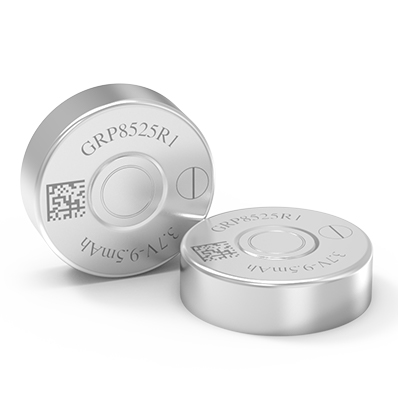Small LiPo Batteries: from Types to Applications
What is Small LiPo?
Small LiPo, short for small Lithium Polymer batteries, represents a class of rechargeable batteries characterized by their compact size, high energy density, and flexibility in design. These batteries are part of the broader lithium-ion (Li-ion) family, distinguished by the use of a solid or semi-solid polymer electrolyte, which allows for thinner and lighter constructions compared to traditional Li-ion cells with liquid electrolytes. Small LiPos are tailored for applications where space is at a premium and weight is a critical factor.
What are Different Types of Small LiPo?
Indeed, small LiPo (Lithium Polymer) batteries can be designed into various shapes and sizes to accommodate the diverse requirements of different electronic devices. This is one of the significant advantages of LiPo technology over conventional cylindrical or prismatic lithium-ion cells. The flexible polymer electrolyte allows for greater design freedom, enabling manufacturers to customize batteries according to unique space constraints. Here are some common shapes and forms small LiPo batteries can take:
Pouch Cells: Pouch cells are perhaps the most typical form of small LiPo batteries. They consist of flat, flexible sheets of electrodes and electrolyte sealed in a soft, aluminum-coated plastic pouch. This design permits a thin profile and can be easily contoured to fit tight spaces within devices.

Picture: Grepow Round Lipo
Cylindrical Cells: Although less common for LiPo due to the preference for flexibility, some small cylindrical LiPo batteries do exist, designed for applications where a standard cylindrical shape is still preferred but with the benefits of LiPo technology.
Custom-Shaped Cells: For highly specialized devices, LiPo batteries can be customized into almost any shapes. This includes curved lipo, rectangular, or even irregular forms that perfectly match the internal architecture of the device, such as smart rings, smartwatch straps, wearable patches, or uniquely shaped IoT devices.

Stackable or Modular Designs: In some applications, small LiPo batteries are designed to be stacked or connected modularly to increase capacity or voltage while maintaining a customizable layout. This approach is useful for devices that may require scalable power solutions.
Thin-Film Batteries: A subset of LiPo technology, thin-film batteries, are exceptionally slim and can be made in extremely small sizes, suitable for microelectronics, smart cards, or medical implants, where space is limited.
The versatility in shape and size makes small LiPo batteries a preferred choice for a wide array of portable electronic devices, ensuring efficient use of space and optimization of device design.
Besides, the classification can also be based on voltage (e.g., single cell at 3.7V, dual cell at 7.4V), capacity (measured in milliamp hours, mAh), and discharge rate (indicated by C-rates, which affects how quickly the battery can release its energy). Specialized types include high discharge rate LiPos for RC vehicles and drones, and low-profile batteries for wearables and slim devices. Additionally, there are also protected LiPo batteries that incorporate built-in safety mechanisms to prevent overcharging, over-discharging, and temperature-related issues.
Is the Smart Mobile Phone Built-in a Small LiPo?
Modern smartphones indeed incorporate compact lithium-ion or lithium polymer batteries that can be considered 'small LiPos.' These batteries are meticulously engineered to fit within the slim profiles of smartphones, offering extended usage times without adding excessive weight. While the specific chemistry may vary between manufacturers, the goal remains consistent: to provide a powerful yet space-efficient power source for today's highly capable mobile devices.
What Applications Need Small LiPo?
Small LiPo batteries find application in a myriad of portable electronic devices where size and weight constraints are stringent. Apart from smartphones, they are crucial for wearable tech like smartwatches and fitness trackers, RC toys and drones, portable speakers, cameras, and even medical devices. Their high energy-to-weight ratio makes them ideal for powering devices that require extended operational times or bursts of intense power.
How to Choose a Small LiPo?
Selecting the right small LiPo battery involves considering several key factors:
· Capacity and Voltage: Determine the device's power consumption and choose a battery with a capacity and voltage that align with your usage needs.
· Discharge Rate (C-Rate): For high-drain devices like drones, opt for a battery with a higher C-rate to support rapid energy release. (Typical C-rate: 0.2C to 1C)
· Size and Shape: Ensure the battery fits the device's battery compartment or can be integrated seamlessly into custom designs.
· Safety Features: Look for batteries with built-in protection circuits to prevent damage from overcharging, deep discharging, or overheating.
· Brand and Quality: Choose reputable brands known for quality control and safety testing to ensure reliability and longevity. Some certifications should be foucus on. If you want batteries for medical devices, the battery supply manufacturer should be qualified for ISO13485 certification.
By carefully weighing these considerations, you can select a small LiPo battery that optimally balances performance, safety, and cost-effectiveness for your specific application.
Related Articles
-

Vatican Drone Show: Where Technology Meets Faith
2025-09-15 -

New Release: Tattu TA300 Multi-Channel Smart Charger for Drone Soccer
2025-09-12 -

How to Handle Battery Overheating Issues?
2025-08-12
Related products
-

GRP8525R1 Rechargeable Lithium-Ion Coin Cell Battery
-

Special Shape Lithium Ion Button Cell Battery
-

Pouch Round Lipo Battery
-

Pouch Ultra Thin Lipo Battery
















































